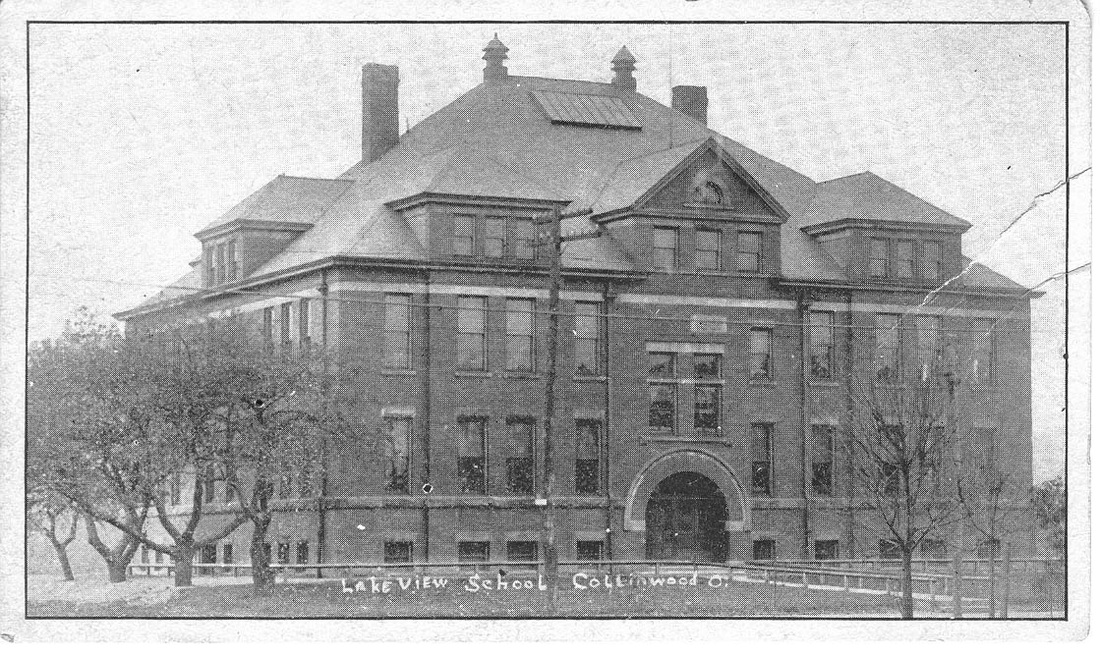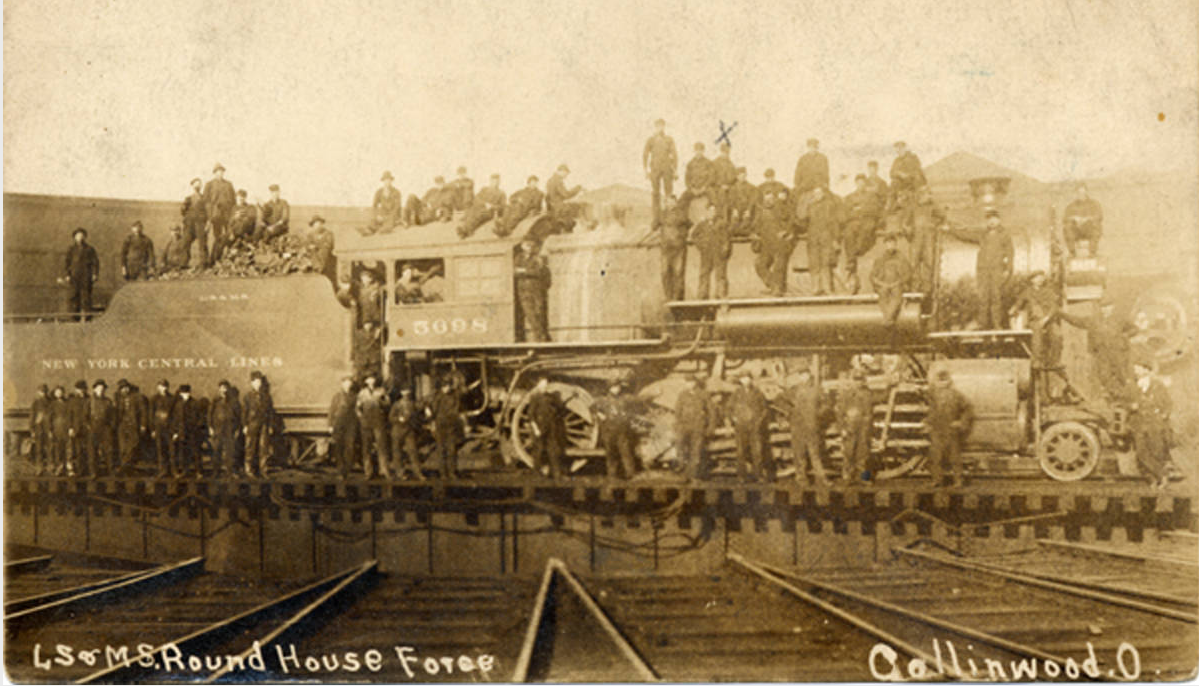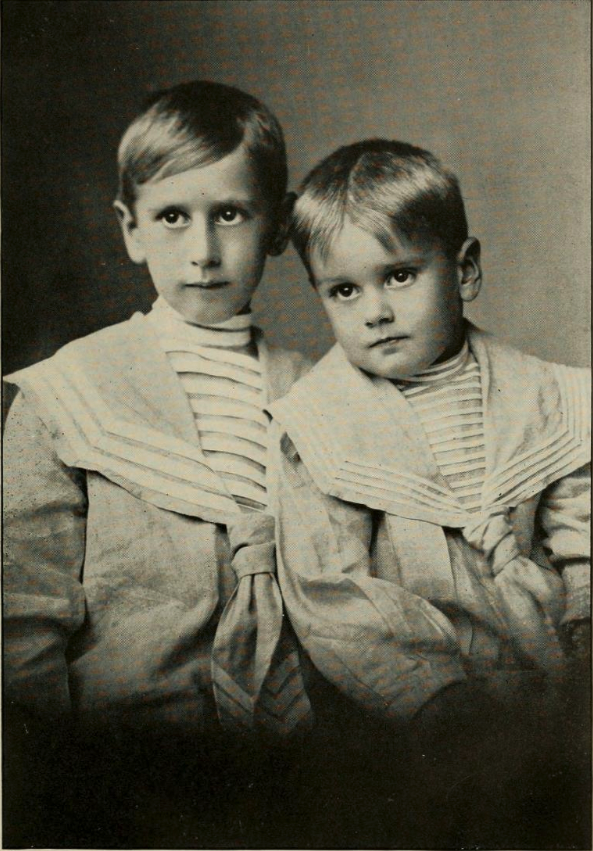Author’s Note: The events we will be discussing occurred one-hundred-fifteen years ago. Many of the details have been lost to history. All attempts at accuracy have been made however, official records are often incomplete and media reports of the day are somewhat unreliable. A list of our source material will be provided at the end of this article.
A Growing Village
In the mid to late eighteen hundreds, Collinwood, Ohio was a mostly agricultural community. Located just outside of Cleveland, there were lots of wide-open spaces, fresh air, and a small community of locals. In 1877 however, The Lake Shore and Michigan Southern Railway began a massive expansion along its Lake Erie line. Cornelius Vanderbilt and The New York Central and Hudson River Railroad purchased a majority of stock in the line in order to provide an ideal line between New York and Chicago.
A New York Central Line train in Collinwood, OH.By 1898, the railway had constructed a yard in Collinwood that literally split the town in half. Local real estate companies planned to use large swaths of land for residential construction. Anticipating future growth, these investors planned lots for residential housing and commercial buildings alike. In addition to the railroad maintenance shops, there were other industries like Browning Engineering, Peerless Manufacturing, and the Lind Paint Company, all building facilities along the tracks.
Property developers had built scores of single-family homes in anticipation of the coming population boom. Most of these houses were twenty by thirty-foot, two-story structures. Families moving to the area typically had between two and five children. Although living in a cramped, twelve-hundred square foot home could be tough at times, they made it work on the hopes that the money coming in would lead to bigger, better things. However, there were certainly some drawbacks of the time. Rockefeller Creek, which ran through most of the village, was the primary outlet for sewage of the residents. In 1909, an inspector from the Board of Health described the creek as a “practically open sewer”. More than two-hundred-thousand gallons of thick, raw sewage from the town oozed into the creek every single day.
The sights and smells from that time period just are completely different than anything that we’re used to. I mean, there’s horses everywhere. There’s a creek that’s described as an open sewer. You have no air quality controls on any manufacturing plants. So the atmosphere itself is, is going to smell a lot different. It’s going to just give off an entirely different vibe. -Tim
Despite cramped housing and an unsanitary creek, Collinwood was attractive to many workers due to numerous job opportunities and affordable housing. In fact, Collinwood experienced a growth of eighty-five percent between 1900 and 1908. Many of the workers moving to the area were immigrants from eastern European countries. After coming through Ellis Island and then going to New York City, Pennsylvania, and Boston, they most likely found job opportunities to be limited and housing costs expensive.
With the rapid expansion of the village, planners and officials recognized the need for a school large enough to accommodate the influx of immigrants and their families. Collinwood’s growth was closely tied to the development of the region. The presence of factories, railroads, and shipping facilities in the area; along with being a major transportation hub near Cleveland, and having a harbor on the shores of Lake Erie, made it an ideal destination of the time.
The Lake View School
In 1898, the cornerstone of the Lake View school was laid. Completed three years later in 1901, it reflected the Greek Revival design which was popular at the time. A substantial, two-story brick building, it housed numerous classrooms, a full basement housing the mechanical components for heating, and a prominent front entrance. The building’s design included large windows to allow natural light into the classrooms and to provide ventilation, which was essential in an era without air conditioning. With brick pier construction for the exterior walls, and timber interior walls with wooden lathe and plaster, as well as wooden floors, the building was considered typical of the day.
The footprint of the school building was sixty-six feet by eighty-four feet. With two floors and a full basement, this gave Lake View an area of approximately fifteen-thousand square feet. In addition to being the primary source of education for the children of Collinwood, the Lake View school also served as a central hub of the community, hosting events, gatherings, and meetings.
In 1906, with the constant growth of the population including school-aged children, and a push from concerned citizens, the decision was made to build a new high school and to also increase the size of Lake View. New construction began in 1906 to add a third floor to the school, increasing its volume to over twenty-thousand square feet. Originally, the third floor addition was designed as a gymnasium but was later converted to house fifth-grade classrooms. The goal of the expansion was to effectively double the capacity of students.
Although the village was experiencing rapid growth, it did not have large amounts of capitol funds. The village directors were notable for being insistent on saving money wherever possible. Most new schools built between the mid 1890s and the 1906 Lake View expansion used steel and stone for stairways, and steel doors leading into them. Between the directors and partners at Searles, Hirsh, and Gavin, the architectural firm hired for the project, the decision was made to continue the use of yellow pine and other wooden products throughout the new addition. There were also no new doors added to stairways, or as exits from the building in general.
So what they’ve done is they’ve increased the occupancy load, but they haven’t increased the egress capacity. In other words we’re gonna allow for more people but we’re not gonna give them more capabilities to exit. -Tyler
During the 1890’s, proponents of reforming public education gained traction with the ideas of bettering the environment for learning within the public schools. In addition to changing from simply repeating spelling of certain words to learning the definitions and meanings behind them, the buildings themselves were to be more conducive to educating students. With a large number of immigrant children coming into the country, there was concern that they would not be able to adapt to their new home properly, much less become productive and educated members of society.
A number of architects consulted with psychologists and other experts of the time to design school buildings in such a way that there was natural light and fresh air in every classroom. Ventilation was important during the warmer months, and heating was even more important since the majority of the school year runs through colder weather. Proper sanitation and hygiene concerns were also addressed in order to prevent the spread of diseases.
Now, by this point you may be imagining the oldest school building you’ve ever been in. There are multiple, long hallways lined with classrooms and lockers, offices up front at the main level, and an auditorium that seems way too small when compared to modern day schools. Everywhere you turn there seems to be a large window letting in the sunlight. These buildings were laid out in rough ‘E’ or ‘H’ shape, designs that were inspired by palaces in Europe. So just think that if the oldest school building you have ever been in was built around the 1940s or 50s, that was a continuation of the reformed style that began in the time period we are discussing. If you’re thinking that this his how the Lake View school looked, you would be completely wrong. While the trend had been to have buildings laid out with multiple wings and hallways, the Lake View school was essentially built as a rectangular box. Although the 1906 expansion added a third story with steeply pitched gable roofs, underneath those roofs was essentially a box made of brick and wood.
Students and staff approached the east entrance on Collamer Street into one of two main stairways. After walking through the doors, vestibules, and up the steps, they found themselves in a roughly oval shaped area on the first floor. To the right was the first grade classroom of miss Pearl Lynn, and to the back right was miss Ethel Rose’s kindergarten class. To the rear left was the first grade classroom of miss Ruby Irwin. And finally, on the left front side of the first floor was the third grade class of miss Grace Fiske.
Between the two classrooms on the right were wardrobe areas where students not only hung their heavy winter coats but could also keep their books and other school supplies. A teachers room was located between the first and third grade classrooms.
On the far side of the middle landing area was another set of stairs. Both ran the entire height of the building from basement to third floor. They also both had entrances and exits for the building along with vestibules and wardrobes that were added during the 1906 expansion.
The second floor was nearly identical to the first with the exception that the school library occupied the space that the teachers room did on the first floor. While there are no longer any existing diagrams of the third floor, it was constructed on top of the original building with plans to be a gymnasium. However, with the constant growth of student population, it was soon converted to classrooms for the fifth-grade students.
Now, this may seem strange to most of you listening but, there were no restroom or toilet facilities on the first, second, or third floors. While the Lake View school did have indoor plumbing, all of those facilities were located in the basement. Even more unheard-of today, there was only separation of genders and not age. In addition to the restrooms, there were also rooms for coal storage, waste ash, and strangely, also playrooms. The basement also housed two boilers in the center of the floor, directly under the center oval shaped area just like the first and second floors. These coal fired units produced pressurized steam for heating. Pipes ran from the basement to a number of cast iron radiators located throughout the school to provide heat during the cold Midwest winters. While some reports say that these pipes were insulated with asbestos, there were certainly no fire breaks along them between floors.
The normal, everyday, comings and goings of staff and students were made through the schools stairways. The east stairway was considered to be the main entrance, likely due to facing the street where all the students walked up from. During the 1906 expansion, village directors opted to not install sidewalks around the building, connecting the east and west entrances on the exterior. As discussed earlier, this was a cost saving measure. A sidewalk did exist from the street to the main, east entrance however.
As we mentioned earlier, vestibules were also constructed around the first floor entrances. Designed as additional areas for children to hang their coats in, they re-routed anyone using the stairs to have to make a ninety-degree turn from the bottom of the stairs to then face and leave out through the main doors. There was also a fire escape on the north side of the building that covered from the third floor almost down to the ground, but not quite. At the end of the fire escape was a drop of about six to nine feet.
Speaking of fire escape plans, fire drills were regularly practiced, with one occurring earlier in 1908. During these drills, students were instructed and trained to follow one route of egress, out the front doors. No drills included the fire escape and only some included using the west or, back entrance. While there is no documentation that specifies what exactly was done during these drills, it is certainly not the orderly procedure that is carried out in schools all around the world today.
We had a summer that I worked for a school’s IT department doing computer setups and stuff like that. They hired a kid …to go around and update all the evacuation the floor plans and evacuation maps over the summer for all the buildings. And they were in basically every room. That’s very common now. -Jeff
If you’ve attended public or private school in the past forty years, you certainly have memories of these drills that were conducted nearly every month. Deafening alarms would scream through the halls, strobe lights flashed everywhere, and doors that were normally open were suddenly closed. You lined up in your classroom behind your teacher and followed them in single-file down the hall, out the door, and to your designated rally point. There, you would silently stand in line while your teachers counted and checked that you and all of your classmates were accounted for. However, in the days of the Lake View school in Collinwood, this sense of order and routine was not established. Whether this was due to inadequate training, or negligence remains lost to history.
Ash Wednesday
On Ash Wednesday, 1908, it was cold in Collinwood Ohio in the hours before the eight o’clock school bell rang. The temperature the night before had been around twenty-three degrees Fahrenheit or, negative five degrees Centigrade, with a light dusting of snow on the ground. Ten-year-old Karoline Kern and her twin brother, Rudolph both walked to the school from their home at 6212 Arcade Street. Their Austrian-German immigrant parents had started the day as well, with their father going to work as a carpenter in a railroad shop. The nine-year-old daughter of a city building superintendent, Gretchen Dorn, was likely bundled up to keep off a chill on her way to the warm school house after being told “Have a great day, I love you” by her mother. Ten-year-old Thomas Thompson and his seven-year-old brother Niles, born to Swedish immigrant parents, walked together to school after saying their good-byes to their mother before she went to work as a confectioner. Their father was deceased, so Thomas felt a great responsibility to help his mother and also look after his little brother.
At 8:30 that morning, Karoline, Rudolph, Gretchen, Thomas and Niles, along with three-hundred-forty-five other children began that day with the regular school prayer. Within two hours, they would be speaking in person with the God they just prayed to.
Sources
-
- Collinwood School Fire – ClevelandHistorical.org
- Collinwood School Fire – Case Western University
- CollinwoodFire.org
- The Lake View School Fire – DHI
- CollinwoodFire.com
- Remember the Lakeview School Fire (Also Known As Collinwood School Fire) – Minnesota Department of Public Safety
- The Collinwood Tragedy – The Kent State University Press
- 10 Heartbreaking Facts About the Collinwood School Fire – StrangeAgo.com
- Grace Fiske – AGraveConcern.wordpress.com
- Collinwood school fire: 100 years later, an angel still kneels over the children – Cleveland.com



